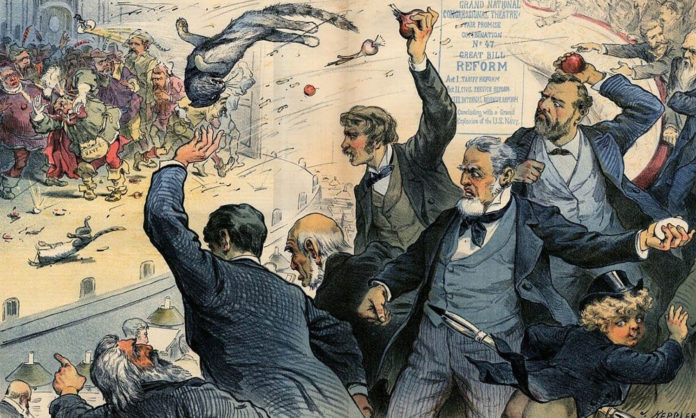
You may have heard about the riots that ensued after the debut of Igor Stravinsky’s ballet The Rite of Spring, but did you know that American theater once roused similar ire? While you might think of theater as family-friendly fare, theater-goers of the 18th and 19th centuries were made of rougher stuff, prone to shouting insults or demanding that popular scenes be repeated. An anti-abolitionist riot broke out at the Bowery Theater in 1834 and in 1849, 22 people were killed during the Astor Place Opera House riots.
By the late 1800s, theater owners began to enforce behavioral change, creating the more placid image of theater that we have today. However, that new attitude was challenged by audience demands for both more and less censorship.
One riot erupted after a production of Vera Violett – known for its risque dancing – was cut short due to fears of overstimulating the spirits of Yale students. Infuriated that the theater omitted the racy parts, students ripped up the chairs and broke the stage footlights, rushed the stage, tried to bring up the curtain, and fought with staff before being quelled by fire hoses. By the end, some 800 students were involved in the riot, which devolved into rock throwing from outside the theater. Surprisingly, the students demanded and got an apology for the fact that the theater charged full ticket prices for a curtailed production.
Two weeks later, Irish nationalists rioted during the opening of The Playboy of the Western World, due to its “un-Irish” elements. Despite a heavy police presence, the audience heckled the actors and threw vegetables at the stage. Despite their opposing motivations, both events challenged the notion of what could and should be presented on the American stage.
What could you do with these riots as a backdrop? What happens next?











